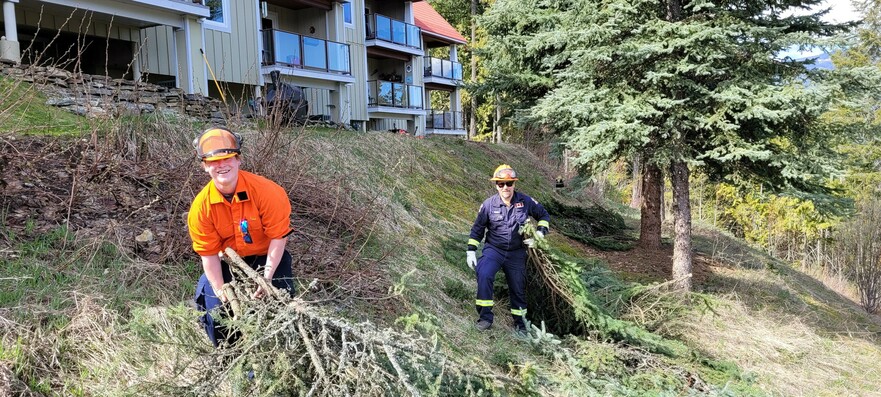
It has been a cold and wet spring in Sicamous and the Eagle Valley. Last year’s wildfire season is a reminder that we live in a very high-risk area and conditions can change quickly. Residents need to think about reducing risk long term versus using season-to-season weather patterns as a catalyst to take action.
As we enter the typical wildfire season, there a couple of key points residents need to consider.
First, you play the biggest role in determining the risk profile of your property. Research and field observations have shown that properties with coniferous vegetation (cedar hedges, junipers, pine bushes) inside of 10 meters of their home are at a higher risk of being damaged or destroyed from a wildfire. Up to 90 per cent of homes damaged or destroyed from a wildfire are a result of embers being cast from a nearby wildfire. If embers land in highly flammable vegetation near the home, that can be the cause of the home ignition.
We were lucky during last year’s wildfires in that we didn’t have ember showers or storms in built up areas, but embers are generally the highest risk we face to our homes.
Second, storing items such as firewood, building materials or other debris near your home is like putting kindling on your property and exposes them to embers. These items are best stored away from your home since they can be possible ignition sources. Storing firewood near your home during the winter is fine, but as people start to collect or have firewood delivered to cure over the summer, think about storing this major fuel source away from your home during wildfire season.
Finally, we need to stop thinking season to season with regards to wildfire preparedness. Even if we have a lessened wildfire season this summer, its very realistic that we will have another record season within the next three years. If we take a long-term approach to community and individual property preparedness, this gives us time to reduce our risk for when we are inevitably exposed to another wildfire. The community of Logan Lake is an example of a high-risk community that dramatically reduced their risk to wildfire. Over ten years ago, Logan Lake residents collectively started working together to reduce community hazards. Last summer when they were immediately threatened by a wildfire, not a single home was lost. We can use these positive examples to demonstrate that FireSmart principles are effective in reducing wildfire damage.
FireSmart can be an overwhelming topic, but you have resources available to you. The District of Sicamous and the Columbia Shuswap Regional District have free FireSmart Programs that residents can access to get help and information to reduce property risk. Don’t wait until we have another wildfire in our community to act – start now, no matter how cold and wet the spring has been.
Additional Resources:
Sicamous FireSmart | firesmart@sicamous.ca
CSRD FireSmart | firesmart@csrd.bc.ca
